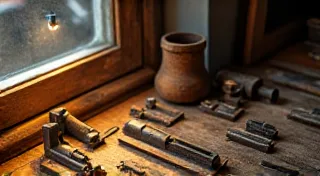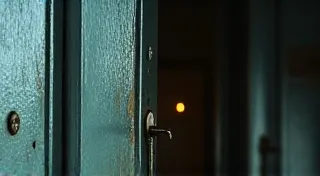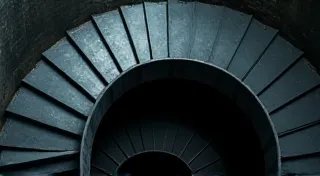The Silent Archive: When a Carousel Projector Refuses to Advance
There’s a particular silence that descends when a vintage carousel projector, a portal to another era, suddenly stops. It’s not a simple mechanical failure; it’s the silencing of memories, the abrupt halt of a performance designed to captivate. These machines, often relegated to dusty attics or forgotten corners, were once the heart of family gatherings, holiday celebrations, and even professional presentations. Their intricate mechanisms, their beautifully crafted housings, and the sheer artistry involved in creating a reliable, automated slide show, represent a commitment to shared experience now largely lost in our digital age.
I remember my grandfather’s projector, a Kodak Carousel. It wasn't just a machine; it was a storyteller. He’d gather the family, the room dimmed, and the gentle whirring would begin. A cascade of images – childhood birthdays, family vacations, weddings – would flicker across the screen, each slide carefully curated and presented. It wasn’t just *seeing* those images; it was the shared narrative, the laughter, the collective sighs of remembrance. Now, years after his passing, I find myself drawn to these machines, not just as collectors' items, but as vessels of personal history.
When one of these projectors fails, especially when the feed mechanism—the ingenious system responsible for advancing the slides—grinds to a halt, it feels like a profound loss. It's a challenge, certainly, but also an opportunity – a chance to reconnect with the craftsmanship and ingenuity of a bygone era. This guide focuses specifically on diagnosing and repairing those feed mechanisms, the often-complex interplay of escapements, pawls, and indexing sprockets that keep the magic alive.
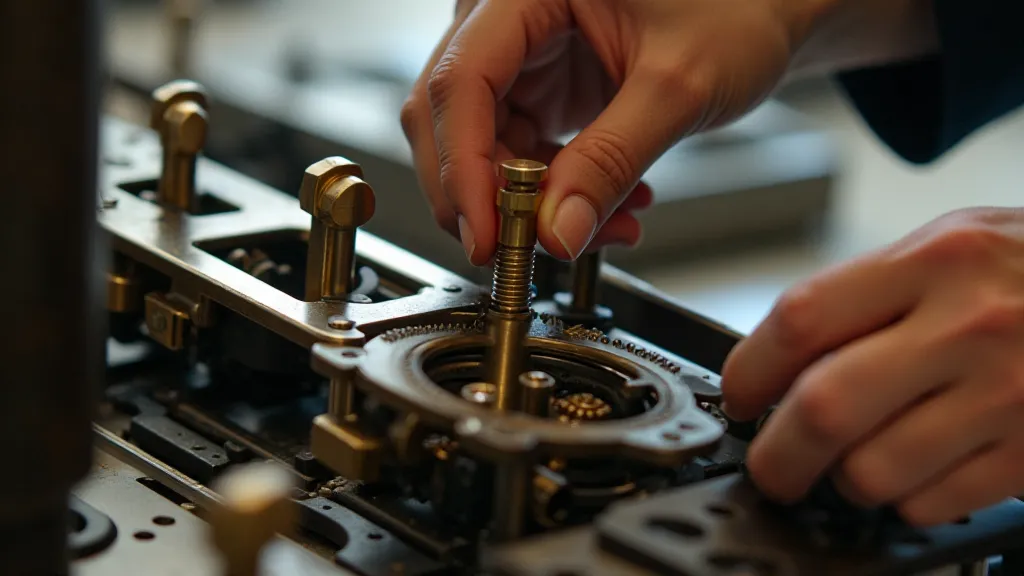
Understanding the Carousel Feed Mechanism
Before we delve into repairs, let's appreciate the elegance of the design. Most carousel projectors utilize a mechanism involving a series of gears and levers that precisely position each slide in the light path. The process is typically driven by a motor, which rotates a main gear. This gear then transmits power to a secondary gear responsible for advancing the carousel itself. Crucial components within this system include:
- The Escapement: This is the heart of the advancement process. It’s a clever system that regulates the release of the carousel, one slide at a time. It involves a lever (the escapement lever) that interacts with a rotating ratchet wheel.
- The Pawls: Small, spring-loaded levers that engage with the ratchet wheel, advancing it incrementally. They are often made of brass or steel and are prone to wear and tear.
- Indexing Sprockets: These specialized gears mesh with a sprocket chain (or occasionally a belt) that is linked to the carousel magazine. They ensure accurate slide placement.
- The Tensioning System: A mechanism (often a spring or rubber band) keeps the sprocket chain taut, preventing slippage and ensuring reliable engagement.
The failure of any one of these components can disrupt the entire process. It's rarely a catastrophic failure; more often, it's a gradual degradation, a sticking pawl, a stretched spring, or a buildup of dust and debris. Sometimes, the issues go beyond a simple mechanical problem, requiring a deeper understanding of how these projectors manage their film carriers. If you're facing problems beyond simple mechanical failure, you might find useful insights into understanding and repairing slide projector film carriers.
Diagnosing the Problem
The first step in any repair is a thorough diagnosis. Don't rush into disassembling the mechanism. Observe and listen:
- Visual Inspection: Carefully examine all the components for obvious signs of damage: broken teeth on gears, bent pawls, cracked plastic parts. A bright light and a magnifying glass are invaluable tools.
- Motor Function: Verify that the motor is actually running. Sometimes, a simple power supply issue is the culprit.
- Escapement Behavior: Manually rotate the carousel while observing the escapement. Does the escapement lever move freely? Does it "click" as it releases the carousel? A sticky escapement is a common cause of failure.
- Pawl Engagement: Check if the pawls are engaging properly with the ratchet wheel. A worn or bent pawl may not be able to advance the carousel.
- Sprocket Chain/Belt Condition: Examine the chain or belt for wear, cracks, or looseness. A slipped chain can prevent proper slide advancement.
If the carousel advances intermittently, it likely indicates a sticking component, often related to the escapement or a worn pawl. If it doesn't advance at all, the problem could be more systemic, involving multiple components or a blocked mechanism. Beyond the mechanical elements, the quality of the projection itself can be affected by factors like color fidelity, which can be influenced by the projector's internal workings. If you've addressed the mechanical issues and still experience issues, investigating chromatic aberration and the fragility of time, restoring color fidelity in vintage slide projects, might provide a valuable approach.
Common Repair Procedures

Once you’re confident in your diagnosis, you can begin the repair process. Here are some common fixes:
- Cleaning: Often, a simple cleaning can resolve the issue. Use a specialized electronics cleaner or a gentle solvent to remove dust, grease, and grime. Pay particular attention to the escapement and pawls.
- Lubrication: Once clean, apply a small amount of light machine oil to the moving parts. Avoid using excessive oil, as it can attract more dust.
- Pawl Adjustment/Replacement: Bent pawls can often be straightened with a pair of fine pliers. If a pawl is severely damaged, it will need to be replaced. Finding replacement parts can be challenging (see sourcing parts below).
- Spring Replacement: Weak or broken springs need to be replaced. These can be particularly difficult to source, requiring careful searching and sometimes improvisation.
- Sprocket Chain/Belt Repair: If the chain or belt is stretched or damaged, it needs to be replaced. This is a more involved repair, often requiring access to a specialist supplier.
- Escapement Adjustment: The escapement lever’s sensitivity can be adjusted, but this requires a delicate touch and a good understanding of how the system operates.
Many owners find themselves striving to not just repair, but truly restore these machines to their former glory. Sometimes, this involves more than just addressing mechanical failures. The complexities inherent in these machines mean it can be challenging to recapture the intended purpose and deliver a satisfying viewing experience, akin to resurrecting the diaporama: restoring motion picture capabilities in vintage carousel projectors.
Sourcing Parts
Finding replacement parts for vintage carousel projectors can be a significant challenge. Here are some avenues to explore:
- Online Auction Sites: Sites like eBay often have sellers specializing in vintage projector parts.
- Vintage Camera and Projector Repair Shops: These shops may have a stock of parts or be able to source them for you.
- Online Forums and Communities: There are several online forums dedicated to vintage projectors. These communities can be a valuable source of information and potentially parts.
- Adaptation and Improvisation: Sometimes, you may need to adapt parts from other projectors or fabricate your own replacements. This requires a higher level of skill and ingenuity.
The Reward of Restoration
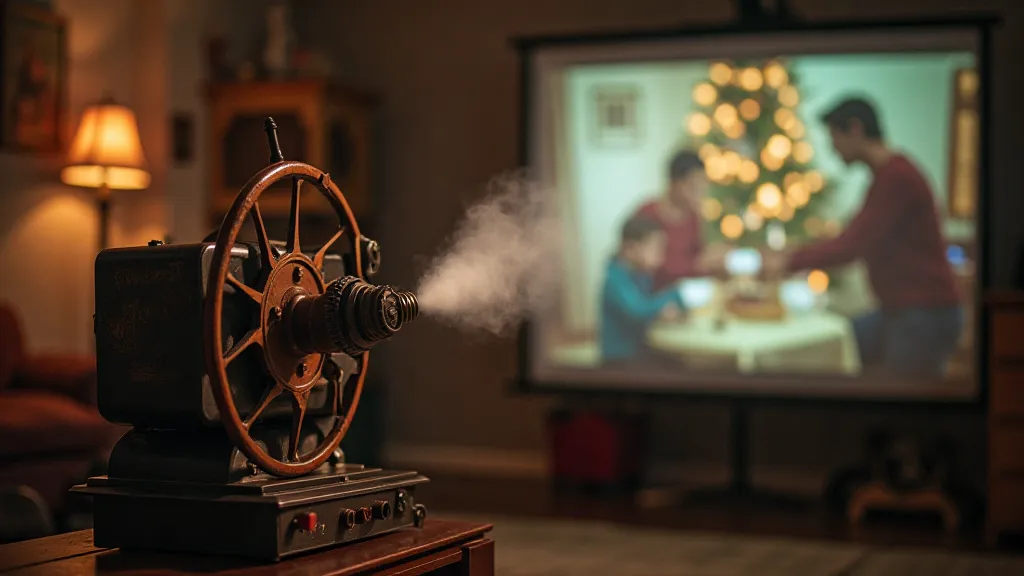
Repairing a vintage carousel projector is more than just fixing a machine; it’s about preserving a piece of history, reconnecting with a bygone era of analog media, and breathing new life into cherished memories. The process itself can be incredibly rewarding, demanding patience, ingenuity, and a deep appreciation for mechanical artistry. Successfully diagnosing and rectifying issues, such as unexpected flickering or sound inconsistencies, can be challenging but immensely satisfying, returning the projector to its intended functionality and delivering a truly immersive viewing experience.
Ultimately, the restoration journey can involve a combination of mechanical repair, electrical troubleshooting, and even aesthetic refurbishment. Careful attention to detail at each stage ensures that the final result is not merely functional, but a testament to the projector's enduring charm and historical significance. Beyond the mechanical, the experience of using a carousel projector can evoke a powerful sense of nostalgia, transporting viewers back to a time when family gatherings and special occasions were often marked by the warm glow of projected slides.
Beyond the practical restoration, there's an intangible value in preserving these relics of the past. They serve as a tangible link to our collective memory, reminding us of the evolution of technology and the enduring power of human connection. By keeping these machines running, we're not just preserving artifacts; we're safeguarding a piece of our cultural heritage and ensuring that future generations can experience the magic of carousel projection.
The pursuit of vintage carousel projection extends beyond simple repairs; it is a dedication to the beauty of analog media and the preservation of a unique form of storytelling. It's a journey into the heart of mechanical ingenuity, an affirmation of the value of craftsmanship, and a celebration of the enduring power of shared experiences.

